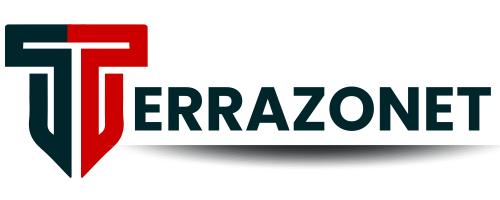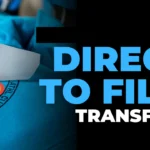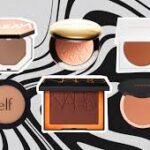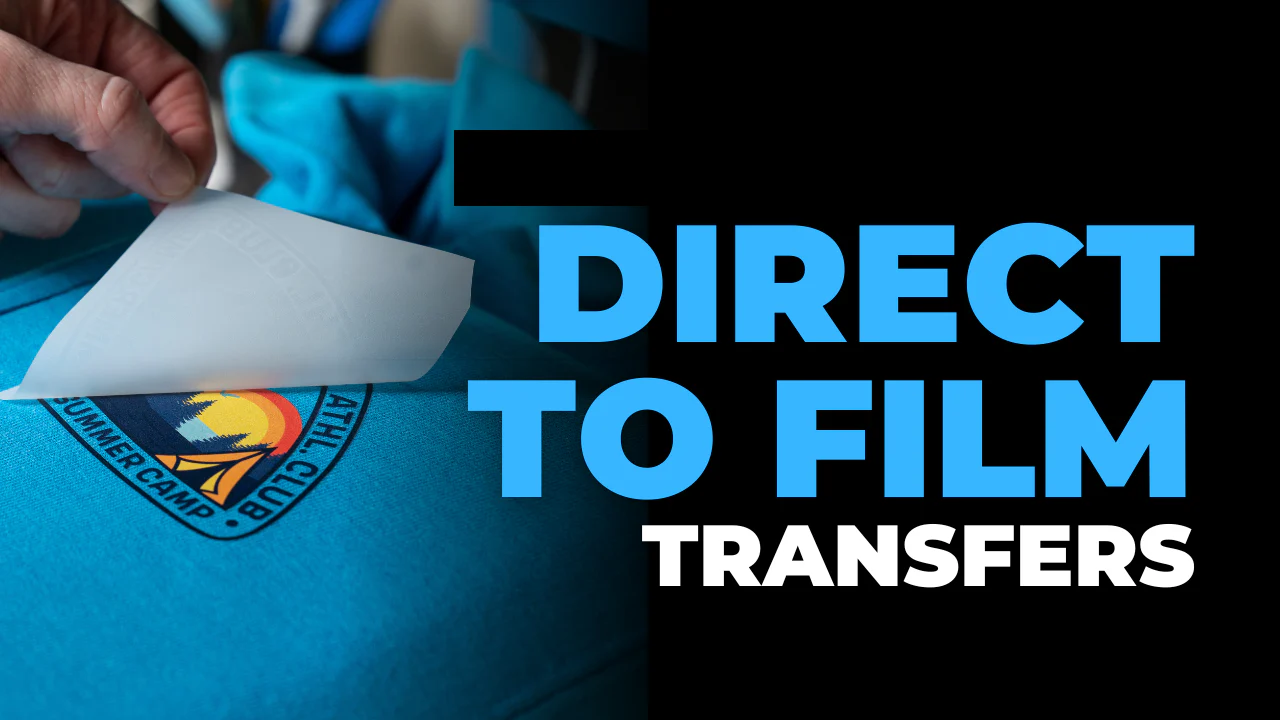Direct-to-Film (DTF) printing is one of the newest and most exciting innovations in the world of custom t-shirt printing. It allows designers, entrepreneurs, and businesses to create vibrant, high-quality prints on a wide range of fabrics. But what exactly is DTF printing, and why is it becoming increasingly popular in the apparel industry?
In this guide, we will explain everything you need to know about Direct-to-Film printing, including its process, benefits, equipment, and how it compares to other printing methods.
What Is Direct-to-Film (DTF) Printing?
Direct-to-Film (DTF) printing is a relatively new method of printing designs onto t-shirts, hoodies, and other types of apparel. As the name suggests, DTF printing involves printing the design onto a special film, which is then transferred to the fabric using heat press technology.
Unlike other printing methods, such as Direct-to-Garment (DTG) printing or screen printing, DTF printing doesn’t require the garment itself to be placed directly into the printer. Instead, the ink is first printed onto a film, making it easier to print on various types of fabrics, including cotton, polyester, and blends.
What sets DTF printing apart is its ability to produce full-color, high-quality prints that are durable and long-lasting. Whether you are a small business owner, a designer, or a hobbyist, DTF printing offers a versatile and cost-effective option for creating custom apparel.
How Does DTF Printing Work?
The process of DTF printing is straightforward but requires a series of precise steps to achieve high-quality results. Let’s break it down:
1. Design Creation
The first step in the DTF printing process is to create the design. Most designs are created digitally using design software, such as Adobe Illustrator or Photoshop. The design is typically created in vector format to ensure crisp lines and high resolution.
2. Printing on Film
Once the design is finalized, it is printed onto a special type of film using a DTF printer. These printers use CMYK inks, which are essential for creating vibrant, full-color prints. The design is printed in reverse, meaning the colors will appear mirrored on the film.
3. Applying Adhesive Powder
After the design is printed on the film, a layer of adhesive powder is applied to the wet ink. This powder helps to bond the ink to the fabric during the transfer process. The film is then passed through a curing unit to melt the powder and ensure it sticks to the ink.
4. Curing the Film
The next step is to cure the printed film. This process involves applying heat to set the ink and adhesive, ensuring that the print is durable and won’t fade over time. This curing step also helps the adhesive powder fully bond with the ink.
5. Transferring to Fabric
Finally, the film is placed on the garment, and heat and pressure are applied using a heat press. The heat press ensures that the design adheres to the fabric, creating a permanent bond. Once the transfer is complete, the film is peeled away, leaving behind a vibrant, durable design.
Read Also: The Power of Personal Style: Why Custom Screen Printed Shirts Still Rule
Advantages of DTF Printing
DTF printing offers a variety of benefits, making it an attractive choice for both small and large businesses. Let’s explore the advantages of using DTF printing for custom apparel:
1. High-Quality Results
One of the key reasons DTF printing has gained popularity is its ability to produce high-quality, vibrant prints. The colors are rich and detailed, making it perfect for complex and multi-color designs. Whether you’re printing logos, illustrations, or full-color artwork, DTF ensures that every detail is captured.
2. Versatility with Fabrics
DTF printing works on a variety of fabric types, including cotton, polyester, blends, and even dark fabrics. This flexibility makes it an ideal option for printing custom designs on a wide range of apparel. Unlike screen printing, which can be limited to certain fabrics, DTF printing offers more options for designers and businesses.
3. Cost-Effective for Small Batches
For small business owners or those just starting, DTF printing is a cost-effective choice. Unlike screen printing, which often requires expensive setup costs and large orders, DTF printing allows for smaller batches without sacrificing quality. This makes it an excellent choice for businesses that need to print custom designs on demand.
4. No Need for Expensive Setup
Traditional printing methods, such as screen printing, require costly setup processes, including creating screens for each color. With DTF printing, there is no need for screens, making it easier and more affordable to start printing custom apparel. This also reduces waste, as you only print what you need.
5. Durability
DTF prints are highly durable and resistant to fading, cracking, and peeling. This makes it ideal for apparel that will be worn regularly, such as t-shirts, hoodies, and other everyday clothing. The prints can withstand multiple washes without losing their quality, making them perfect for long-lasting custom merchandise.
Equipment Needed for DTF Printing
While DTF printing offers many advantages, it’s important to understand the equipment required to get started. Here are the key items you will need:
1. DTF Printer
To begin DTF printing, you’ll need a specialized DTF printer. These printers use CMYK inks and are specifically designed to print onto film. There are several types of DTF printers available on the market, ranging from entry-level to professional models.
2. Transfer Film and Ink
The quality of your prints will depend on the transfer film and ink you use. You’ll need high-quality film to ensure that the ink adheres properly and that the final print is vibrant and long-lasting. Specialized DTF ink is also essential for achieving the best results.
3. Powder Adhesive
Powder adhesive is a crucial component of the DTF printing process. This powder is applied to the printed film to bond the ink to the fabric during the transfer process. The adhesive powder needs to be high-quality to ensure a strong bond and long-lasting prints.
4. Heat Press
A heat press is required to transfer the printed design onto the fabric. The heat press applies the necessary heat and pressure to ensure that the ink bonds securely to the garment. You’ll need a heat press that can reach the appropriate temperature and pressure for DTF printing.
DTF Printing vs. Other Printing Methods
Now that you understand how DTF printing works, it’s important to compare it to other popular printing methods to see how it stacks up.
DTF vs. DTG (Direct-to-Garment) Printing
DTG printing is another popular method for printing custom apparel, but it has some limitations compared to DTF. DTG printing requires the garment to be loaded into the printer, and it works best on lighter-colored fabrics. In contrast, DTF printing is more versatile, as it can print on both light and dark fabrics without the need for pre-treatment.
DTF vs. Screen Printing
Screen printing is a traditional method that involves creating a separate screen for each color. While screen printing is excellent for large orders, it is costly for small batches due to setup fees. DTF printing, on the other hand, is more cost-effective for smaller orders and offers greater flexibility with fabric types and designs.
DTF vs. Heat Transfer Vinyl (HTV)
Heat Transfer Vinyl (HTV) printing involves cutting designs out of vinyl sheets and applying them to garments. While HTV is great for simple, single-color designs, DTF printing allows for more complex, multi-colored designs and works on a wider range of fabrics.
Is DTF Printing Right for You?
DTF printing is a great choice for businesses and individuals who want to create custom apparel quickly and affordably. It’s ideal for small batch production, high-quality prints, and versatile fabric choices. If you’re looking to offer custom designs on-demand, DTF printing is an excellent option.
Conclusion
Direct-to-Film (DTF) printing is a powerful and versatile printing method that offers many advantages, including high-quality results, versatility, and cost-effectiveness. Whether you’re a business owner, designer, or hobbyist, DTF printing can help you create vibrant and durable custom apparel.
By understanding how DTF printing works and the benefits it offers, you can make an informed decision about whether it’s the right choice for your next project. With the right equipment and techniques, you can start creating stunning custom t-shirts, hoodies, and other apparel that your customers will love.
You May Also Like: How Managed Print Services Solutions Improve Business Efficiency



















